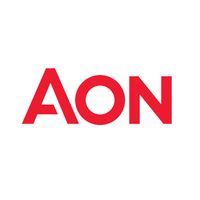Are you communicating your pension scheme effectively?

Unfortunately though, when it comes to pension communication exercises, it's often a bit of a tussle between the cost of communications and the budget. And, with budgets usually winning, many companies find themselves ditching their good intentions.
Effective communications
When budgets are tight, there are ways to get the message across for less. Your pension provider is an obvious starting point with some providers ramping up the support they can offer employers with their employee communications. But, where this proves to be a bit of a dead-end, or you'd prefer to do your own thing, it is possible to make your own pension communications more effective, without busting your budget.
The key to this is to change the focus of the message. Rather than highlight all the plan details, focus on the outcome an employee can achieve. By showing them what they might receive, rather than what they might be giving up now in terms of their contributions, you're much more likely to engage them with their pension planning.
But a figure showing them what their pension is likely to be in five, 10 or even 40 years time is only half the story. Providing them with the necessary tools and financial education to take control of their future retirement income will really bring their pension scheme to life.
Control your pension destiny
It's pretty straightforward. When it comes to an employee's future pension there are four things that can affect how much they'll receive. These are:
- Time - the longer they have the more opportunity for investment growth
- Contributions - the more that's paid in, the bigger their pot is likely to be
- Performance - picking the most appropriate fund can deliver higher returns
- Charges - go low and there's more money left in the pension pot for growth
To a greater or lesser degree, these are things an employee or employer may be able to control. For example, employees could decide to increase their monthly contributions, switch to a higher risk fund if they have plenty of time until retirement and this aligns with their personal attitude towards investment risk, or even postpone taking their pension for a couple of years.
And, as employees furthest from retirement tend to be the least engaged with their pension, it can be worth highlighting the fact that they have the opportunity to make the most difference to their future fund size.
Make it personal
Alongside this education, it's sensible to provide employees with access to an interactive modelling tool. Being able to see how their future fund value and retirement income changes if they, for example, pay in more or change their retirement date, transforms this from pension theory to something that's really engaging.
Once employees have the power to influence their retirement income by making these types of changes, you can extend this education to other activities that will improve their pension provision. For example, transferring in old pension policies may give them access to lower charges and better fund ranges as well as making it easier to manage their retirement savings.
It's also sensible to help employees understand how their pension fits with their other financial planning. They might have a private pension outside of work, or their spouse may have a generous pension lined up. Helping them understand their whole financial position can enable them to make much more informed decisions about their workplace pension.
Measuring success
But building an effective pensions communication programme also creates another challenge - measuring how successful it is. Even, or perhaps especially, if you've kept budgets to the minimum, you'll want to see what return you've achieved on your investment.
There are a number of ways to do this. Employee surveys can demonstrate that pension engagement has increased but it's also worth monitoring pension-related activity. Seeing an increase in the number of employees visiting your pension website is one option, but monitoring activities such as increasing contributions, switching funds and transferring in older schemes can show that more employees have taken control of their pension.
Implementing an effective communications programme is key to helping your employees gain control of their pensions. The additional flexibility and choice now available is a welcome thing, but it also pushes greater responsibility on employees to engage with their pensions. Giving them the power to take control and make the choices that will give them the retirement income they deserve is essential.
Martin Parish is head of pension consulting at Aon Employee Benefits.
This article was provided by Aon Employee Benefits.







